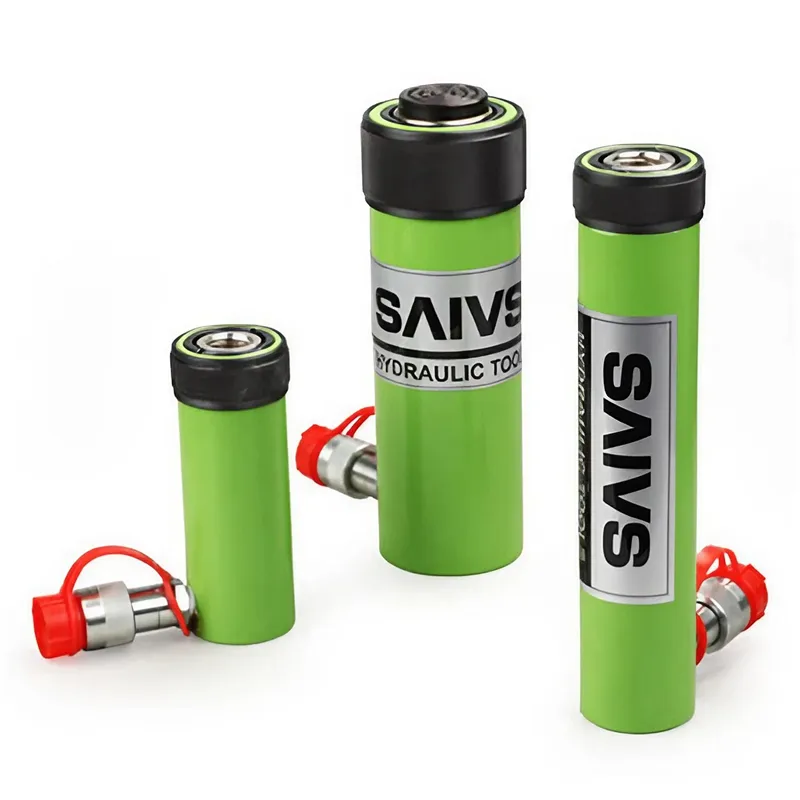How to repair hydraulic cylinders
Hydraulic Cylinders are critical components in various industrial applications, providing the force and
motion needed to operate heavy machinery. However, like any mechanical system, hydraulic cylinders can
experience failures over time. Recognizing the signs of cylinder failure, understanding the causes behind it,
and knowing how to repair them are essential for maintaining optimal performance and prolonging their lifespan.
In this article, we will explore these aspects in detail.
Signs of Hydraulic Cylinder Failure
One of the most apparent signs of hydraulic cylinder failure is fluid leakage. If you notice oil or hydraulic
fluid around the cylinder or on nearby components, it indicates a seal or gasket failure within the cylinder.
Leaks can lead to reduced performance and potential damage to other parts of the Hydraulic System.
2. Slow or Erratic Cylinder Movement
If you observe that your hydraulic cylinder is operating slower than usual or displaying irregular movement patterns,
it could indicate internal issues such as worn-out seals, damaged piston rods, or contaminated fluid.
These problems can compromise efficiency and overall system functionality.
3. Excessive Noise or Vibrations
Unusual noises such as knocking sounds or excessive vibrations during operation may suggest internal
damage within the hydraulic cylinder. These symptoms can be caused by loose fittings,
misalignment of components, worn-out bearings, or damaged seals.
4. Inconsistent Force Output
A decline in force output from your hydraulic cylinder may be a sign of impending failure. If you notice reduced
lifting capacity or inadequate pushing/pulling power compared to normal operation, it could indicate problems
with valve blockages, worn-out seals, piston ring wear, or internal leaks.
Causes of Hydraulic Cylinder Failure
1. Seal Degradation
Seals play a vital role in preventing fluid leakage and maintaining pressure within the hydraulic cylinder.
Over time, exposure to high pressures and temperature fluctuations can cause seals to degrade and lose their effectiveness.
2. Contaminated Fluid
Contamination in the hydraulic fluid is a common cause of cylinder failure as it leads to increased wear on
internal components such as seals and valves. Particles like dirt,dust,and metal shavings can
enter through improper filtration systems,malfunctioning breather caps,and dirty
reservoirs,resulting in accelerated wear and reduced performance.
3.Piston Rod Damage
The piston rod is subjected to significant stress during operation.Its surface may get scratched,dented,
bent due to abrasive particles,collisions with external objects,and improper maintenance.
These damages compromise seal integrity,resulting in leaks,reduced efficiency,
and potential catastrophic failures if left unaddressed.
4.Inadequate Lubrication
Insufficient lubrication within a hydraulic cylinder can lead to increased friction between moving parts.
This friction accelerates wear on surfaces such as piston rods,bearings,and bushings,resulting in premature
component failure.Regular lubrication maintenance is crucial for ensuring
smooth operation and extending component life expectancy.
How to Repair Hydraulic Cylinders
1.Diagnose the Problem
Thoroughly inspect the failed hydraulic cylinder while paying attention to visible signs,such as leaks,
vibrations,and irregular movements.Examine all relevant components including seals,piston rods,valves,
bearings,and filters.This step helps identify specific issues requiring repair/replacement.
2.Disassemble & Clean Components
Carefully disassemble the faulty cylinder,taking note of each step for proper reassembly.Clean all parts
thoroughly using an appropriate solvent.Remove any accumulated debris,dirt,oil residue from surfaces,
piston rods,valves,cylinder barrels.This process ensures optimal functioning during reassembly,
reducing chances of contamination-related failures.
3.Replace Faulty Seals & Gaskets
Identify damaged/worn-out seals,gaskets,o-rings during inspection.Replace them with new ones that match
manufacturer specifications.Ensure proper installation techniques are followed while lubricating
new seals/gaskets before assembly.Proper sealing prevents leakage,
minimizes friction,and maintains efficient performance.
4.Repair/Replace Damaged Piston Rods & Other Components
If inspection reveals damaged piston rods,bent shafts,worn bearings/bushings,it's crucial either
repair them through grinding/honing processes (if feasible)or replace them altogether.
Ensure replacements adhere strictly manufacturer guidelines regarding size,tolerance,fittings.
For extensive repairs involving machining services,it's advisable consult professional technicians
experienced hydraulics repairs/restorations workmanship quality standards adherence checks upon completion.
5.Reassemble & Test
Reassemble all cleaned/repaired/replaced components following correct sequence.Properly tighten fasteners
according torque specifications.Apply recommended thread locking compounds where necessary.
Once reassembled,test newly repaired hydraulics systems checking operations ensuring no leaks,
functionality meets expectations.Allow ample time testing ensure reliability safety restored equipment
prior resuming regular operations usage following successful repair procedures completion.
Why Choose SAIVS™ as Your Supplier?
With 20 years of industry experience, SAIVS is a leading Chinese manufacturer of high-quality tools, offering competitive pricing and excellent customer service.We pride ourselves on exceptional quality control, extensive experience, and comprehensive after-sales service.
